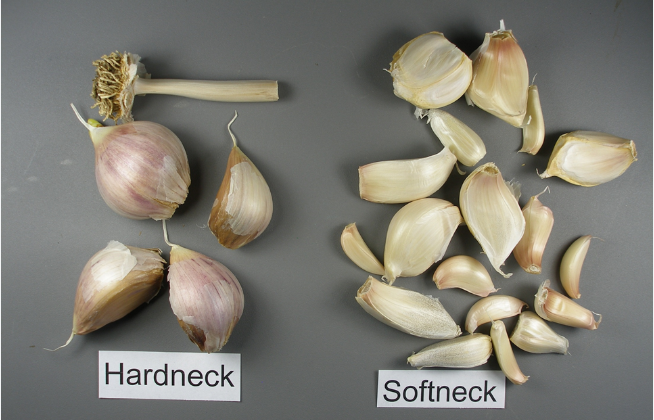Garlic is one of those magic ingredients that can transform any dish from bland to brilliant. Growing your own garlic is incredibly satisfying, not to mention it’s a fantastic way to ensure you always have fresh, organic bulbs at your fingertips. But the key to getting the most out of your garlic crop lies in knowing exactly when and how to harvest it. If you’re looking to master the art of Harvesting Garlic, you’ve come to the right place. Let’s dive into the nitty-gritty of timing and techniques to ensure you get the best out of your garlic garden.
Understanding Garlic Growth Stages
To harvest garlic at the perfect time, you need to understand its growth stages. Garlic doesn’t grow overnight; it’s a process that takes several months. Let’s break it down.
The Planting Phase
Garlic is typically planted in the fall, around October, before the first frost hits. This allows the bulbs enough time before winter to form roots. Once planted, garlic goes through a period of dormancy during the cold months, only to start growing vigorously as the weather warms up in spring.
The Growing Phase
In spring, you’ll start to see green shoots emerging from the ground. This is a sign that your garlic is coming to life. Throughout spring and early summer, the plant will focus on growing foliage. This stage is crucial as healthy leaves are essential for the development of large, healthy bulbs.
The Maturation Phase
As summer progresses, the garlic plant’s energy shifts from growing leaves to developing bulbs. This is the phase where you need to pay close attention. The leaves will start to yellow and die back, indicating that the garlic is nearing maturity.
Timing Your Harvesting Garlic
Harvesting garlic at the right time is crucial. If you pull it too early, the bulbs might be too small. If you wait too long, the bulbs can split and won’t store well. So, how do you get it just right?
Observing the Leaves
One of the best indicators of when to harvest garlic is the state of its leaves. As a rule of thumb, garlic is ready to be harvested when about one-third to one-half of the leaves have turned yellow or brown. If the leaves are still mostly green, the bulbs are likely not fully mature. On the other hand, if all the leaves are brown, you might have waited a bit too long.
Checking the Bulbs
If you’re unsure about the timing, you can always do a test dig. Carefully dig up one or two bulbs and check their size. The cloves should be well-formed and plump. If they’re still small and tight, give them a bit more time.
Weather Considerations
It’s also essential to consider the weather. Ideally, you should harvest garlic on a dry day. Wet soil can make harvesting more difficult and can lead to the bulbs being dirty, which complicates the curing process.
Techniques for Harvesting Garlic
Now that you’ve got the timing down, let’s talk about the actual process of harvesting garlic. It’s not as simple as yanking the plants out of the ground; there’s a bit more finesse involved.
Tools You’ll Need
To harvest garlic, you’ll need a few basic tools: a garden fork or shovel, gloves, and a soft brush. These will help you dig up the bulbs without damaging them and clean off any excess soil.
Digging Up the Bulbs
Start by gently loosening the soil around the garlic plants with your garden fork or shovel. Be careful not to pierce the bulbs. Once the soil is loose, you can gently pull the plants out of the ground by their stems. Shake off any large clumps of soil, but leave the smaller particles for later cleaning.
Handling the Bulbs
Once you’ve pulled the garlic out of the ground, handle the bulbs with care. The outer layers of skin are delicate and can easily tear. Avoid banging the bulbs together or against any hard surfaces.
Curing and Storing Garlic
Proper curing and storage are crucial for ensuring your garlic lasts through the winter months. This process helps to enhance the flavor and prolongs the shelf life of the bulbs.
The Curing Process
Curing garlic involves drying the bulbs in a well-ventilated area. Here’s how to do it:
-
Bundle the Bulbs: Tie the garlic in small bundles of about 5-10 bulbs, or lay them out in a single layer on a mesh surface.
-
Choose the Right Spot: Hang the bundles or place the bulbs in a cool, dry, and well-ventilated area, out of direct sunlight. A shed, garage, or covered porch works well.
-
Give It Time: Allow the garlic to cure for 2-3 weeks. The outer skins should become papery and dry, and the necks should be completely dry.
Cleaning and Trimming
Once the garlic is cured, it’s time to clean and trim it for storage. Gently brush off any remaining dirt from the bulbs. Trim the roots to about 1/4 inch and cut the stems to about an inch above the bulb.
Storing Garlic
Store your cured garlic in a cool, dark place with good air circulation. A mesh bag, paper bag, or even a cardboard box works well. Avoid storing garlic in the fridge as it can encourage sprouting.
Common Garlic Harvesting Mistakes
Even seasoned gardeners can make mistakes when harvesting garlic. Here are a few typical dangers along with tips for avoiding them.
Harvesting Too Early or Too Late
Timing is everything. Harvesting too early can result in small, underdeveloped bulbs. Waiting too long can cause the bulbs to split and become susceptible to disease.
Damaging the Bulbs
Using the wrong tools or being too rough when digging up garlic can damage the bulbs. This can affect their shelf life and make them more prone to rot.
Improper Curing
Skipping the curing process or not curing garlic properly can lead to mold and decay. Make sure to cure your garlic in a well-ventilated area out of direct sunlight.
Tips for a Successful Harvesting Garlic
To wrap things up, let’s go over some tips to ensure your garlic harvest is a smashing success.
Start with Quality Seed Garlic
The quality of your seed garlic sets the foundation for your harvest. Use disease-free, high-quality garlic cloves from a reputable source.
Prepare the Soil
Garlic prefers loose, well-draining soil with plenty of organic matter. Before planting, amend your soil with compost to give your garlic the best start.
Mulch for Protection
Mulching your garlic bed helps retain moisture, suppress weeds, and protect the bulbs from extreme temperatures.
Rotate Your Crops
Avoid planting garlic in the same spot year after year to prevent soil-borne diseases. Rotate your crops to keep your soil healthy.
Conclusion
Harvesting garlic is a rewarding experience that brings you closer to your food and the earth. By understanding the growth stages, timing your harvest perfectly, using the right techniques, and avoiding common mistakes, you can enjoy a bountiful garlic harvest year after year. So, roll up your sleeves, get your hands dirty, and savor the satisfaction of growing and harvesting your own garlic. Happy gardening!



